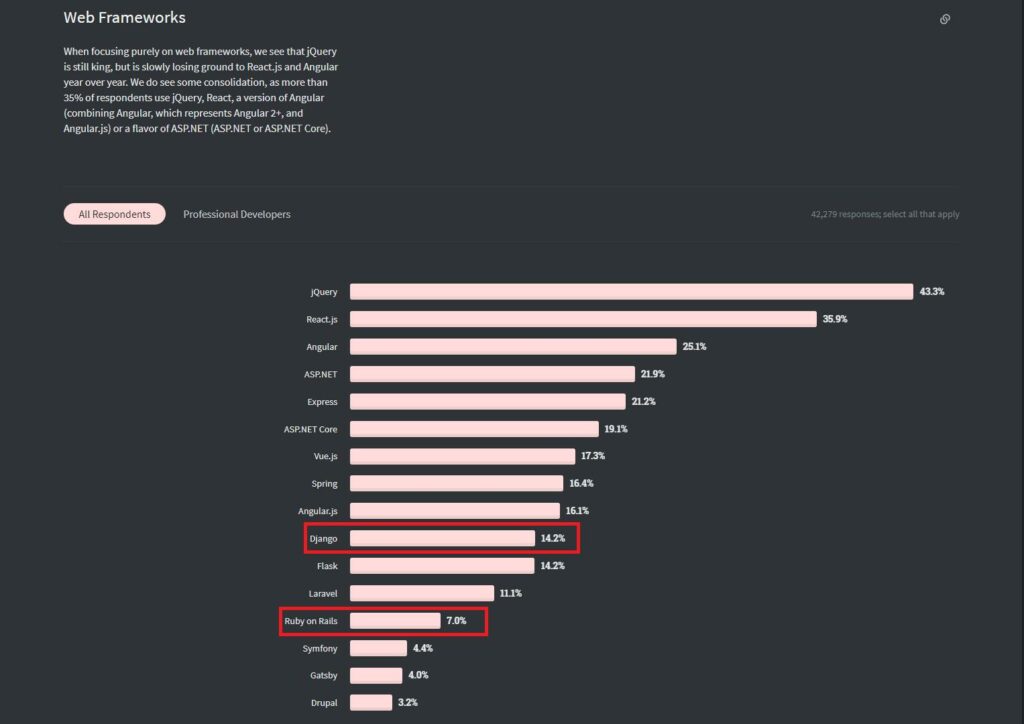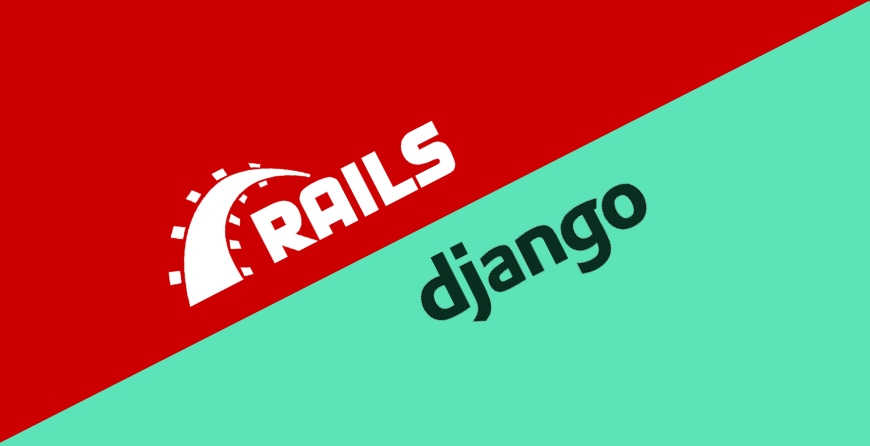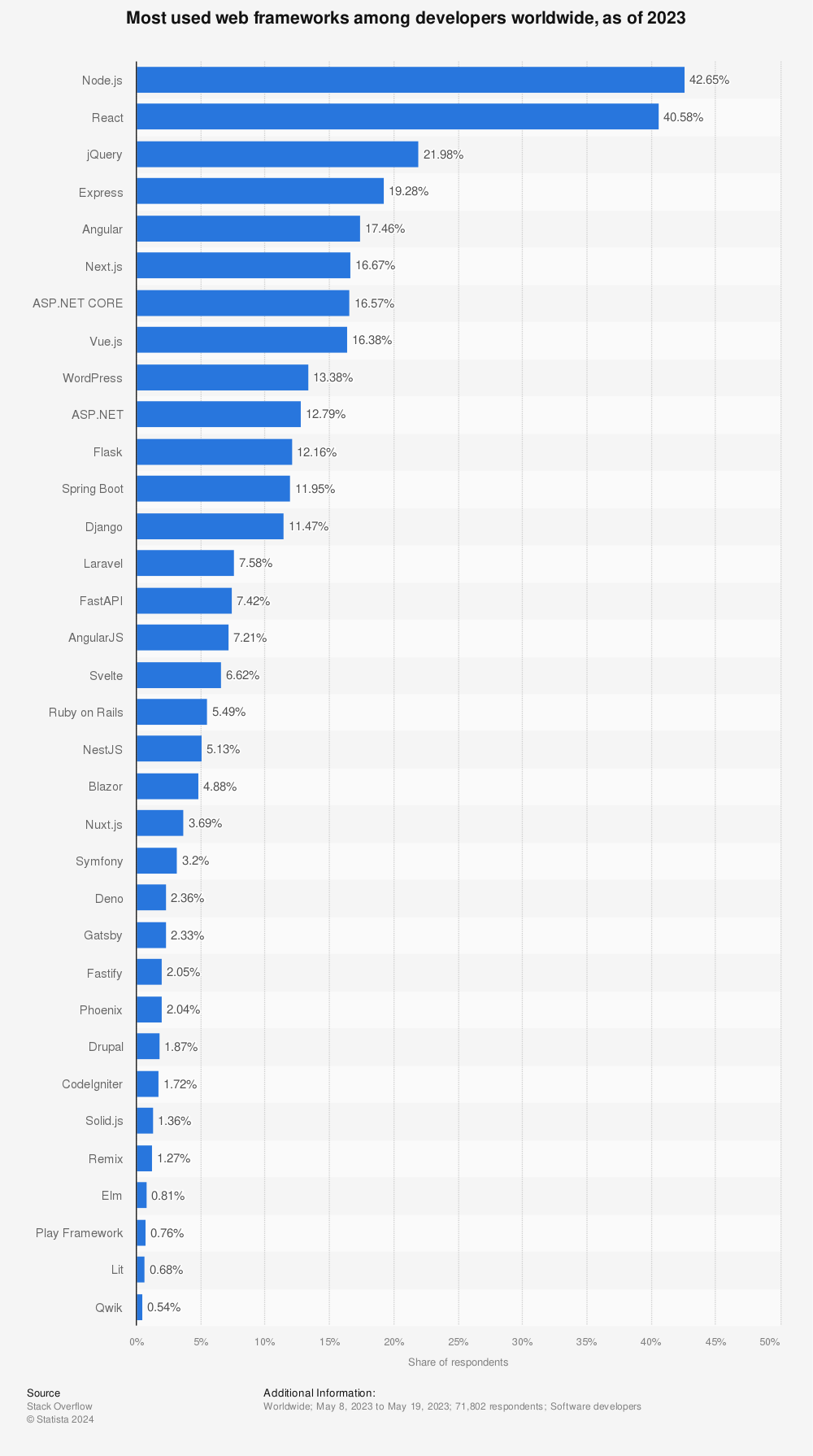Ruby on Rails vs Django is a decade-long debate
Businesses are trying hard to choose the right backend framework for their web application, which is similar to finding a needle in a haystack. This time we have prepared a comparison between two of the most popular and deserving frameworks.
In this Ruby on Rails vs Django comparison blog, we will discuss their overview, popularity, performance, architecture, stability and other factors. This time we are up with another comparison blog post between the two most popular and deserving backed frameworks Ruby on Rails vs Django in 2022.
Ruby on Rails vs Django: Overview
1. Ruby on Rails
Ruby on Rails (ROR) is a free and open-source MVC framework for creating web applications. David Heinemeier, a Danish programmer, created it at first, and the Rails Core Team has been looking after it since 2004. Among Ruby developers, it is one of the most popular and highly regarded web frameworks.
The guiding concepts of Ruby On Rails are “Convention over configuration” and “Don’t repeat yourself,” which suggest that a developer has to configure only those components of the application that differ from standard settings.
Ruby on Rails’ scaffolding and extensibility are its best qualities. RoR focuses on building and turning modules into templates that can be quickly inserted into the code, leaving the developer with only minor adjustment options without having to rewrite the entire structure.
Ruby on Rails’ dependency management mechanism, known as gems, enables extensibility. Ruby on Rails Gems may be downloaded and installed in an application with just one console command. Due to these capabilities, Ruby on Rails is a very effective platform for developing web applications in an agile manner. Experienced RoR developers can help you develop any custom Ruby on Rails project.
Read our guide to hire Ruby on Rails developers in 2023.
2. Django
Django is one of the most popular Python-based web frameworks. It is open source and is built using an MVC pattern that has been slightly modified. Django was initially created for The World Company News’ website’s content management system, and it was later released in 2005 under a BSD open-source license.
Django focuses on creating sophisticated web apps that are database-driven. It is a popular Python online application framework that adheres to the “batteries-included” principle, which states that the main and comprehensive functionality should be included within the framework itself rather than as a collection of standalone extensions or packages.
In contrast to frameworks like Flask or Padrino, the RoR framework includes features like URL routing, authentication, templating systems, and data model migrations.
The feature that distinguishes Django from other Python frameworks is the ability to construct the admin interface based on the provided database definition. Although Django’s code generation is well supported and adheres to the same standards as Ruby on Rails, the easiest and quickest approach to get the desired output is to avoid rewriting previously produced material.
Related Post: Ruby VS Python: A Head-to-Head Comparison
Ruby on Rails Vs Django: Framework
A web framework or web application framework is a software framework used for the overall development of a web application. Developers use web frameworks to automate typical activities performed during web development. A web framework simplifies the web development process making it easier to build a website. The following is the comparison of Ruby on Rails vs Django framework based on support, internationalization, design-friendly, and Javascript support.
| Factor | Ruby on Rails | Django |
|---|---|---|
| Support for model and schema evolution | Integrated framework for schema evolution | Minimal |
| internationalization | Some support | Some support |
| Designer-Friendly Templates | Possible with the use of a third-party plugin | Yes |
| Third-Party Plugin Support | Mature plugin architecture, well used by the community | Some support vie the application mechanisms |
| JavaScript Support | Prototypes bundled with Rails, and RJS framework simplifies their use | Possible but no direct support for any particular library |
| Development Flavor | Concise | Explicit |
Ruby on Rails vs Django: Framework Features
Ruby on Rails offers automation and code reuse in programming, which may help you save time and effort. This further solidifies it as the greatest option for SMEs looking to develop a secure, scalable, and cutting-edge web or mobile application.
As Ruby on Rails programming comes with automation and code reusability, it could save you time and effort. This further makes it the best choice for SMEs to build a scalable, secure, and futuristic web/mobile application.
Unquestionably, one of the best web frameworks for creating scalable applications is Django. But if you want to launch the web application quickly before working on its specifics, Ruby programming language is ideal.
Related Post: Ruby on Rails VS Node JS: An In-Depth Comparison
| Features | Ruby on Rails | Django |
|---|---|---|
| Purpose | Web Applications | Web applications, Desktop applications |
| Operating Systems | Cross-platform | Cross-platform |
| Language | Ruby | Python |
| Database | Microsoft SQL Server, MongoDB, MySQL, PostgreSQL, Drizzle, Oracle, Redis, Cassandra, Couch DB, Maria DB, Memcache DB, NoSQL DB, Edition, etc. | IBM DB2, Apache, COuchbase, Cassandra, PostgreSQL, MySQL, MongoDB, Redis, etc |
| Memory recommended | 1GB | 128MB |
| Tag | MVC (Model-View-Controller) | MVT (Model-View-Template) |
| Startup Time | 1s | 2s |
| Difficulty Level | Advanced | Medium |
Ruby on Rails vs Django: Popularity
In the 2020 Developer Survey by Stack Overflow, around 42000 developers responded about their favourite web frameworks.

According to Statista, we can see some similar popularity of both Ruby on Rails And Django. According to statistics, 14.65% of developers prefer Django and 5.83% of developers use Ruby on Rails.
Ruby on Rails Vs Django: Architecture
1. Ruby on Rails
Model view controller (MVC) is an architectural style that Ruby on Rails (RoR) adheres to. Posts, comments, images, and other types of database data are described by this model. While View handles the data in an HTML template and transforms it into the controller, Active Record manages the database. Active View then oversees it. The model is then included by Action Controller in Maintenance requests and Balance answers that are provided to the browser.
2. Django
Model view template (MVT) architecture is used by Django. The model displays a database that demonstrates its organisation. MVT is a regular expression-based URL dispatcher that manages users’ viewing privileges. Through MVT, the number of users who can see is determined. The Django templates language is integrated with the MVT web template system, which keeps Django’s full functionality.
Winner: Both.
Ruby on Rails Vs Django: Performance
1. Ruby on Rails
Ruby on Rails-based web apps is 0.7% faster than Django-based ones. Rails include essential frameworks and plugins that improve websites’ efficiency and speed. Rails outperform Django in terms of speed comparisons.
2. Django
It is clear from comparing the performance of Python’s Django with Ruby on Rails that Django runs more slowly. This is because it is unable to use libraries and plugins to increase speed. But Django makes development easy and is a great choice for web applications.
Other extensions in Django make it simple to use JSON serializers and authentication for forms. Your online apps become quick and noticeable as a result. Django performs better than any contemporary framework, except for Rails. The framework also provides the resources required for code optimization.
Winner: Rails
Ruby on Rails Vs Django: User Interface
1. Ruby on Rails
With Ruby on Rails, a better user interface is promised. Additionally, it has the tools necessary to create high-quality websites with interactive user interfaces. Everything is included in this framework to make the website user-friendly. Ruby on Rails framework provides a wide range of tools right out of the box, allowing you to build complete applications very quickly. There are adapters for almost all databases available, so you don’t need to worry about anything else.
Eventually, you will need to use Ruby on Rails API if you want to add more functionality to your services. Read our guide on how to build a Ruby on Rails API.
2. Django
The Django framework offers a superior user experience. It offers quick response times, full responsiveness, and excellent animations and designs. It also offers sophisticated features utilising various extensions and plugins, which helps users more.
Winner: Both.
Ruby on Rails Vs Django: Key Differences
1. Ruby on Rails
Ruby, a well-known programming language, is used to create Rails. Ruby is renowned for its exceptional qualities, such as flexibility, independence, and straightforward syntax. Using Rails, programmers may create a whole online application.
2. Django
Python, the most well-known programming language in the world, is used to create Django. This programming language has received high praise. Python is a popular option since it is straightforward and simple to programme. This helps businesses save time.
Ruby on Rails vs Django: Comparative Analysis
| Comparison Criteria | Ruby on Rails | Django |
|---|---|---|
| Application development speed |
- Very fast, especially for light apps. - Avoiding challenging database connections. - Use scaffolding and command line-based generated code for light apps. |
Very fast development using lightweight syntax with automatically generated content and custom templating language. |
| Learning curve | It is very steep for a developer who is already familiar with Ruby | It is a rather very steep |
| Documentation and community support | Community support is top-notch. Documentation is extensive. Many books and web pages are available. | Documentation is very good and well structured |
| Code length | Very short | The code lengths is very short |
| Application speed | Since Ruby is interpreted, the speed is not that high. | Depends on the Python interpretation on the server. |
| Usage | Working with the framework is easy with gems | Due to well arranged application structure, use of Django is good. |
| Stability | ROR is very extensible, many security and stability gems are available for stability | Django provides basic authentication and security measures, other security extensions can be installed separately |
| Function extensibility | The extensibility is excellent due to gems | Many separate modules are available for Django even though it provides most of the functionality by itself |
Ruby on Rails Vs Django: When to Use?
1. Ruby on Rails
Ruby on Rails may be used to create database-backed web apps that stand out and improve user experience. Hire remote ruby on rails developer to simplify the complex process of creating ruby applications. Ruby on Rails is the ideal choice for you if you require the flexibility to design a distinctive website.
2. Django
Django will be the best solution with secure and effective administrative systems if business owners need to build complex web apps that handle data. It develops more quickly and offers a high-quality website with advanced programming manipulation, data analytics, etc.
| Ruby on Rails | Django |
|---|---|
| For quick MVP development | Advanced web apps with ML and AI features |
| Rapid prototypes | Scientific and mathematical programming |
| Safe and secure ecommerce web apps | Highly secure web sites |
| Simplicity of use and extreme productivity | Working with a huge database and big data |
| Scalable websites with the real-time updating | Large development team |
Why Choose Django vs. Rails applications
It is clear from comparing Django and Rails projects that both are very effective web frameworks. Both provide cutting-edge techniques for enhancing their code’s performance. They also offer the aforementioned qualities.
- Top-class user interface.
- Secure and strong.
- The building is well maintained.
- Advanced features.








